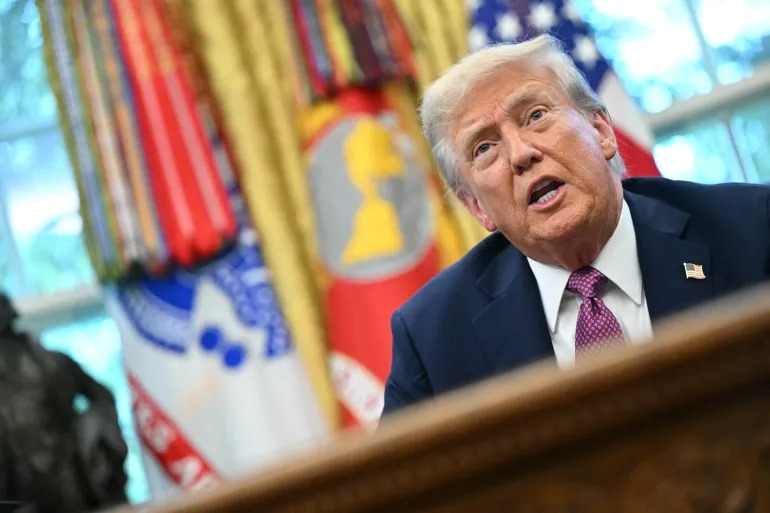Department of War Trump Signals Aggressive Military Shift

Related Articles
Department of War Trump: President Trump renames the Pentagon, signaling a more aggressive U.S. military strategy and a shift from “woke” policies. In a groundbreaking move, U.S. President Donald Trump has issued an executive order to rename the Department of Defense to the Department of War, signaling a shift toward a more offensive military posture. The announcement came during a ceremony in the Oval Office, accompanied by Pentagon Chief Pete Hegseth.
Trump Criticizes “Woke” Policies, Calls for Military Victories
President Trump described the change as part of his administration’s efforts to move away from what he calls “woke” ideology in the military. Speaking at the ceremony, he emphasized the importance of achieving victories rather than merely maintaining political correctness.
Trump framed the renaming as part of a broader effort to restore the United States’ historical tradition of military triumphs, citing past victories in World Wars I and II.
Pentagon Chief Supports “War-Forward” Approach
Pentagon Chief Pete Hegseth expressed support for the name change, framing it as a step to reinstate the warrior ethos within the U.S. military. Hegseth highlighted that the department will now prioritize decisive actions:
This statement suggests a shift toward more aggressive operations, contrasting with the defensive strategies associated with the Department of Defense in recent decades.
Historical Context: Returning to the Original Name
Interestingly, the Department of Defense was originally called the Department of War from 1789 to 1949. After World War II, Congress passed the National Security Act, which consolidated military branches under a civilian-led department and renamed it to emphasize defense and prevention of conflict, especially in the nuclear age.
Trump’s move revives this historical name while signaling a renewed focus on offensive military capability.
Implications for U.S. Foreign Policy
Analysts suggest that the renaming reflects a more assertive foreign policy, consistent with Trump’s actions since taking office for a second term. Recent operations include strikes in Yemen, Iran, and the Caribbean Sea, targeting alleged drug traffickers and terrorist groups.
The executive order also changes the title of the Secretary of Defense to Secretary of War, further reinforcing a pro-combat stance.
Trump’s Broader Pattern of Renaming and Policy Reversals
The Trump administration has previously made several symbolic changes, including:
- Restoring the Confederate-associated name Fort Bragg while attributing it to World War II paratrooper Roland Bragg.
- Renaming the Gulf of Mexico to the “Gulf of America” in federal documents.
- Reversing diversity and inclusion initiatives within the military.
These actions reflect Trump’s strategy to emphasize tradition, military strength, and a nationalist identity over progressive reforms.
Legal and Legislative Considerations
While the executive order applies to all White House statements and executive communications, a permanent change would require Congressional approval. Trump has indicated that he will push for legislation to codify the name change into law, potentially marking a historic shift in U.S. defense policy.
Conclusion: A New Era for U.S. Military Strategy
The renaming of the Department of Defense to the Department of War symbolizes a clear pivot toward an offensive military doctrine. It underscores President Trump’s focus on victories, deterrence, and a more aggressive posture internationally, while signaling a departure from decades of defense-oriented policy.









